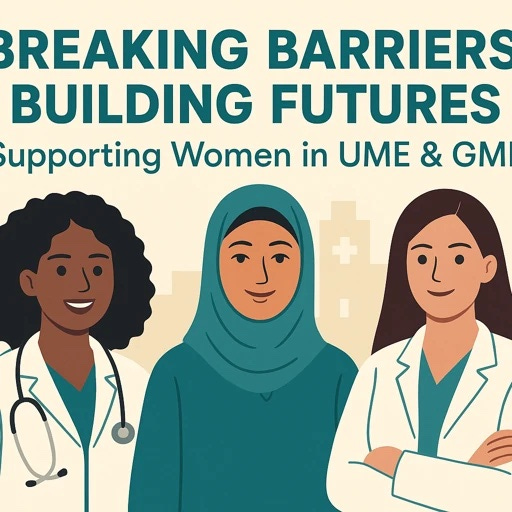Breaking Barriers, Building Futures: Supporting Women in UME & GME
September is Women in Medicine Month. A time to celebrate the extraordinary contributions of women in medicine, while also reflecting on the systemic barriers that remain.
Today, women represent over 50% of medical school entrants in the U.S. This milestone reflects years of progress in access and representation. Yet, as thee same women progress through residency, fellowship, and beyond, the numbers tell a different story. Women remain underrepresented in leadership positions, face persistent pay gaps, and often encounter structural challenges that hinder career advancement.
In Undergraduate Medical Education (UME) women excel academically, often matching into competitive specialties. But in Graduate Medical Education (GME), the realities of long work hours, parental leave policies, and subtle biases in evaluations can disproportionately affect their training experience. These barriers continue into academic careers, where women remain less likely to hold department chair or dean positions.
So, what can we do?
Mentorship & Sponsorship- While mentorship provides advocacy. Women trainees need leaders who not only advise but actively create opportunities.
Equitable Policies - Standardizing parental leave, offering childcare support, and addressing bias in evaluations are small changes with big impact.
Leadership Development- Encouraging women residents and fellows to purse educational, administrative, and scholarly roles early helps strengthen the leadership pipeline.
As we celebrate Women in Medicine Month, it’s important to remember that the work is not only about recognition, but also about building systems that allow women in medicine to thrive; from their very first day of medical school to the highest levels of leadership.
Because when women in medicine rise, the entire field of healthcare rises within them!


